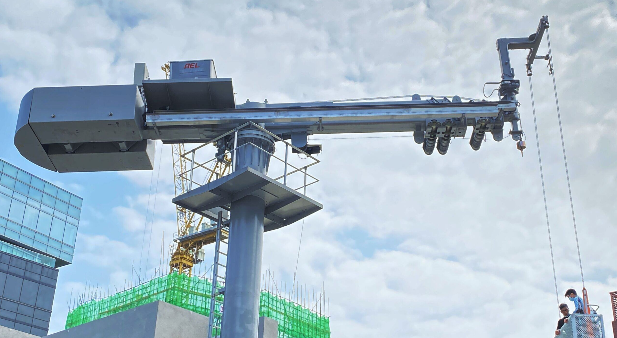Smart building services are redefining the way businesses manage facilities, combining intelligent automation, IoT (Internet of Things), and AI-powered analytics to create buildings that are safer, more efficient, and more sustainable. Instead of manually monitoring systems or reacting to problems after they occur, businesses can now anticipate needs, prevent breakdowns, and optimize resources in real time.
For forward-thinking organizations, adopting smart building services is no longer a futuristic concept—it’s a competitive necessity. By implementing these solutions, companies can significantly reduce costs, enhance occupant comfort, and meet increasingly strict sustainability targets without compromising operational performance.
What Are Smart Building Services?
Smart building services encompass a wide range of technologies and processes designed to make buildings operate intelligently. These services leverage interconnected IoT devices, AI-driven analytics, and automated systems to monitor, control, and optimize various aspects of building operations—such as lighting, HVAC, energy use, plumbing, and security.
Unlike traditional building management systems, smart building services don’t just respond to human input—they actively analyze data and adapt in real time. This shift from reactive to proactive management is what allows facilities to achieve higher efficiency, better safety, and lower environmental impact.
Key technologies behind smart building services include:
- IoT Sensors and Devices: Constantly collect data on air quality, occupancy, temperature, and equipment status.
- AI and Machine Learning: Process and analyze data to make predictive adjustments and detect anomalies.
- Automation Systems: Automatically adjust lighting, heating, cooling, and other systems for maximum efficiency.
Key Benefits of Smart Building Services
Improved Operational Efficiency: With smart building services, routine tasks such as adjusting lighting or monitoring HVAC performance are handled automatically. Predictive maintenance tools can detect early signs of equipment wear, scheduling repairs before breakdowns occur—minimizing downtime and saving money.
For example, a predictive maintenance system could detect subtle changes in a chiller’s vibration pattern and automatically alert technicians before a costly failure happens.
Energy Savings and Sustainability: Energy efficiency is a top priority for modern facilities. Smart building services optimize power consumption using solutions like Smart Energy Management Systems (Smart EMS), which integrate renewable energy sources and balance load demands throughout the day.
By intelligently shifting energy usage to off-peak hours, facilities can lower electricity bills and reduce strain on the grid. Over time, these optimizations translate into substantial cost savings and measurable reductions in carbon footprint.
Enhanced Safety and Security: AI-powered surveillance systems within smart building services monitor premises in real time, detecting anomalies such as unauthorized access or unusual movement patterns. These systems can send instant alerts to security personnel, improving response times and preventing incidents.
Automated fire detection, access control, and environmental monitoring also contribute to a safer environment for building occupants.
Better Decision-Making: Smart building services often include interactive dashboards that provide real-time performance data. Building managers can track energy usage, occupancy patterns, and equipment health from a single platform. These insights enable more informed decisions about maintenance schedules, space utilization, and future upgrades.
Core Smart Building Solutions
Smart IoT Solutions
Smart IoT solutions transform buildings into responsive, data-driven environments. Examples include:
- Air Quality Monitoring: Ensures healthy indoor environments by tracking pollutants and adjusting ventilation automatically.
- Predictive Maintenance: Uses sensor data to anticipate equipment servicing needs before failures occur.
- Smart IoT Toilet: Automates cleaning and maintenance schedules while optimizing water and resource usage.
- Smart IoT MEP: Enhances HVAC, lighting, and plumbing efficiency through centralized, intelligent control.
Security and performance visualization are also vital. AI surveillance strengthens safety through anomaly detection, while Smart IoT Dashboards provide actionable insights for building performance optimization.
Smart EMS (Energy Management System)
A Smart EMS integrates technologies like HyESys and IoT to manage power more intelligently. HyESys allows seamless integration of AC and DC power sources, enabling energy arbitrage—where energy use is shifted to off-peak hours for maximum savings.
Key benefits of Smart EMS include:
- Intelligent battery management for uninterrupted operations.
- Predictive analytics to forecast energy needs.
- Integration with renewable energy for sustainability.
For example, a business could store solar energy generated during the day and deploy it during peak demand hours, reducing dependency on the grid and cutting costs significantly.
Why Businesses Should Invest in Smart Building Services
- Rising Operational Costs: Automation and predictive maintenance help reduce unnecessary expenses.
- Sustainability Regulations: Meeting environmental targets is easier with efficient energy and resource management.
- Competitive Advantage: Innovative buildings attract tenants, customers, and investors.
- Long-Term ROI: Initial investment in smart building services is offset by long-term savings and improved asset lifespan.
The more connected and optimized a building becomes, the more value it delivers—both financially and operationally.
How to Choose the Right Smart Building Services Provider
When evaluating providers, businesses should consider:
- Scalability: Can the solution grow with your business?
- Integration Capability: Will it work with existing systems?
- Customization: Are solutions tailored to your unique operational needs?
- Data Security: How is sensitive building data protected?
- Support and Maintenance: Is there reliable after-sales support?
Choosing a provider with proven expertise in IoT, AI, and sustainable practices ensures your investment delivers lasting benefits.
The Future of Smart Building Services
Advancements in AI, edge computing, and renewable energy integration will make smart building services even more powerful. In the near future, buildings will interact seamlessly with smart city infrastructure, sharing energy resources, optimizing traffic flow, and contributing to urban sustainability goals.
Predictive sustainability—where buildings adjust operations not just for efficiency but for long-term environmental health—will become standard practice.
Takeaway
Smart building services are more than just a trend—they’re a transformative approach to facilities management that blends technology, efficiency, and sustainability. From IoT-powered monitoring systems to AI-driven energy optimization, these solutions help businesses cut costs, enhance safety, and reduce environmental impact.
Organizations that embrace smart building services today position themselves for a future where operational excellence and sustainability go hand in hand. The question is no longer whether to invest, but how soon you can start building smarter.











